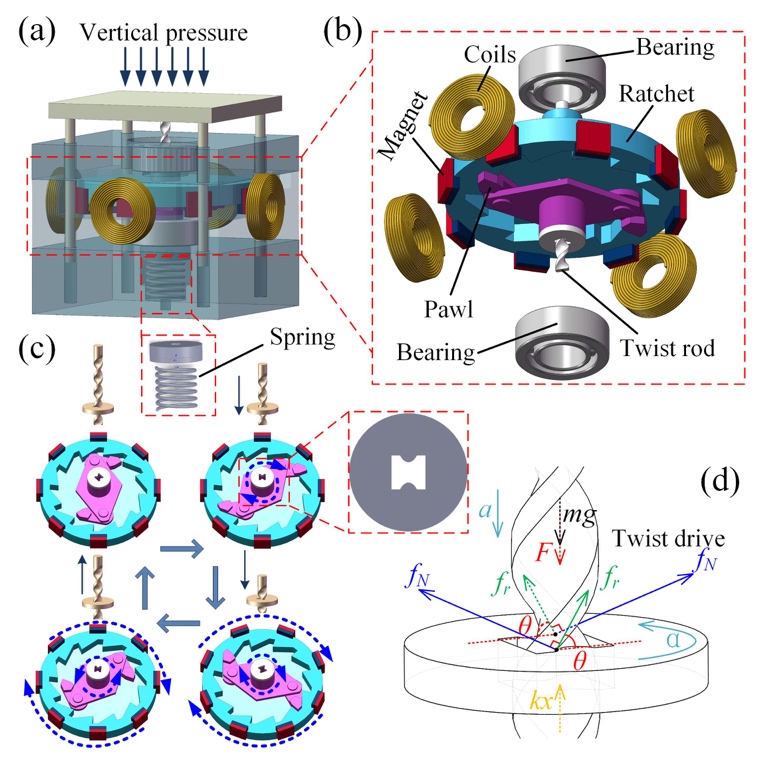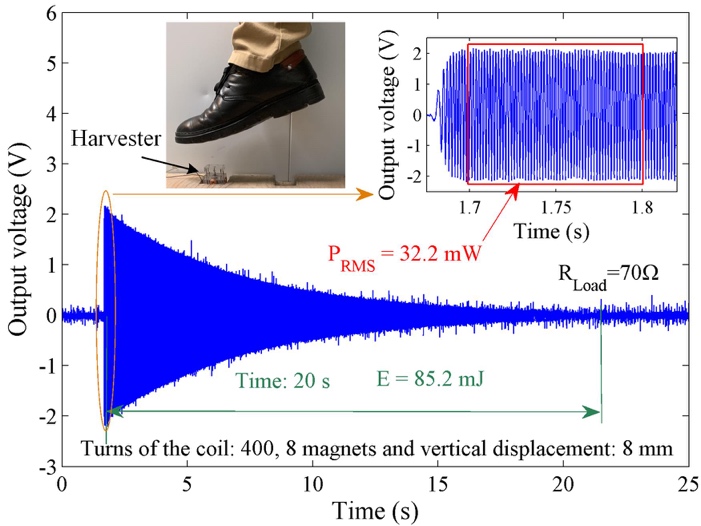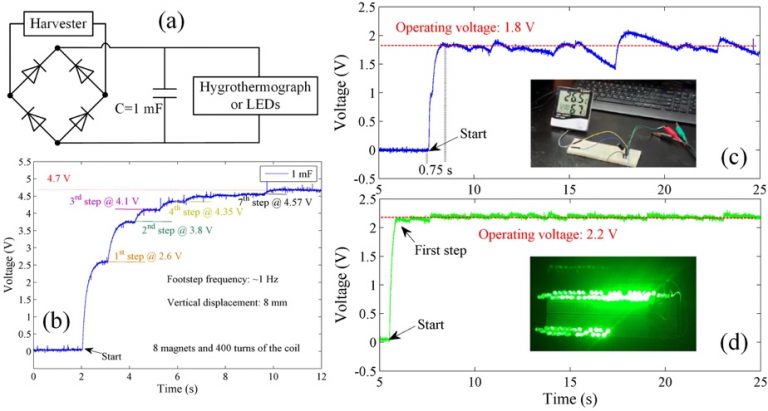Scholars from Southern University of Science and Technology (SUSTech) have found a better way to harvest energy from the way we walk.
The SUSTech researchers, led by the School of Microelectronics Associate Professor Fei Wang, have published their findings in the top-tier academic journal, Applied Physics Letters as a Featured Article. The article was titled, “Rotational electromagnetic energy harvester for human motion application at low frequency,” and published on February 4th . AIP Scilight also posted the paper as a special report.
Kinetic energy harvesting is a sustainable method for powering small devices such as wristwatches. However, the mismatch between low-frequency human motions and the higher resonant frequencies of vibrational energy harvesters makes the conversion from mechanical energy to electricity a complicated process with low efficiency.

The researchers used a rotational energy harvester to convert mechanical energy from irregular human motion to usable electrical energy. They combined a double screw structure and a small circular plate with a dumbbell-shaped hole. The low-frequency linear motion of the screw is converted into a high-speed rotating motion of the small disc. The high-speed rotating motion supports the collection of vibration energy, which provides the basis for the high-power density energy output of the device. It is all contained in one small device. The rotational energy causes a current in the attached copper coils, which is stored in a capacitor.

The device was installed under a wooden floor to display its applicability. A person walked on the floor at a rate of about 1 Hz that compressed the equipment approximately 8 mm, simulating the speed people walk on footpaths.

The results showed a stable voltage of 2.2 V, enough to light up to 70 green light-emitting diodes (LEDs) simultaneously.
Despite the low voltage output of this device, it provides commercial opportunities for a variety of low-power devices. It could include environmental monitoring devices, temperature and humidity sensors, and motion trackers.
The future is also bright for this technological development, with opportunities to harvest energy from cars driving along roads and from buoys floating in the ocean. The authors plan to continue studying the field for future industrial prospects such as the Internet of Things and 5G Networks.
The co-first authors of the paper were the School of Microelectronics Dr. Yulong Zhang and doctoral candidate Anxin Luo. Additional support for the article came from the State Key Laboratory of AMS-VLSI and the University of Macau (UM). Associate Professor Fei Wang was the correspondent author, and SUSTech was the correspondent unit.
The research team wants to thank the Materials Characterization and Preparation Center (now Core Research Facilities) at SUSTech. They received support from the Shenzhen Science and Technology Innovation Committee and the Guangdong Natural Science Funds.
Article link: https://aip.scitation.org/doi/full/10.1063/1.5142575
AIP Scilight link: https://aip.scitation.org/doi/10.1063/10.0000796
Proofread ByXia Yingying
Photo BySchool of Microelectronics, Qiu Yan